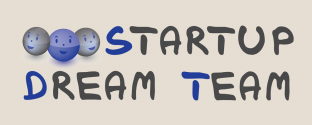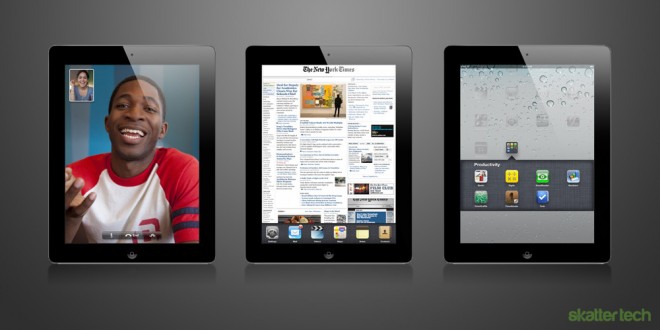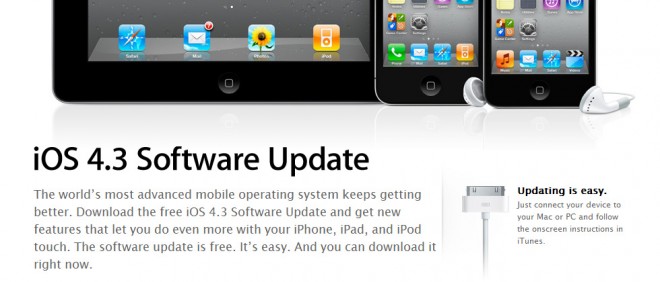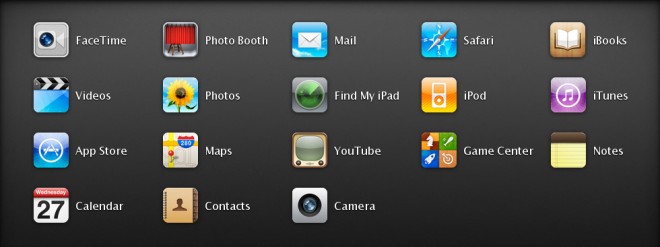Like many tech enthusiasts, I followed last week’s Apple event closely. Steve Jobs unexpectedly took the stage, but the company announced an expected product: the iPad 2. Although not nearly as revolutionary as the original, the second generation model brings refined hardware improvements. Extras such as cameras are also a great addition, however there is one major flaw: iOS.
Do Hardware Specs Matter?
This questions comes up quite often and the answer is not simple. Apple’s original iPad was a game changer since there was nothing else like it on the market. Tablet PCs had been around for ages, but they still ran a desktop operating system. While I adore Windows 7 and use it primarily for all my work, it is far from being ideal for tablets. With the introduction of iOS, hardware specs for tablets became more along the lines of a smart phone rather than a laptop computer.
Although 2010 was definitely the year of the iPad, 2011 has an entirely new landscape. Competition such as the BlackBerry PlayBook, HP TouchPad, Motorola Xoom, Samsung Galaxy Tab 10, and LG G-Slate each offer a very similar set of features. There are some benefits and drawbacks to each which we highlighted in our series of infographics, but the specifications are roughly the same. They are so close in some regards that it truly does not make a difference to consumers.
Software Matters Too
While hardware specifications were all the rage for ages, easy to use and intuitive software has pushed for consumer friendly devices. Apple made a great decision when they chose to run iOS on the iPad instead of Mac OS X last year. The interface was efficient, familiar, and simple. The iPhone was already a hit and the iPad was a perfectly complement to the family.
Although I do not own an iPad, I spent some time using and reviewing it last year. There were many missing features at the time, however iOS ran incredibly smoothly. Fast forward a year later, not much has changed aside from the addition of multitasking. The new iPad 2 makes things faster with a dual-core processor, but the operating system is nearly identical.
This creates a major issue for Apple as we head into the flooded market of tablets in 2011. The current iOS for the iPad is essentially an enlarged version of the operating system for the iPhone and iPod touch. The platform was a great start, but the original design does not take advantage of the tablet form factor. Although I was hoping for a new refreshing interface, Apple did not announce a major software revamp for the iPad 2 aside from a few minor enhancements.
The Competition Has Caught Up
There are many amazing iPad apps that take advantage of 9.7 inch screen, but the operating system does not go far enough. Google, HP, and RIM have started from the ground up with new tablet operating systems that take the slate form factor into consideration from the OS level. BlackBerry Tablet OS, webOS 3, and Android 3.0 Honeycomb each offer many user interface improvements which are more innovative and intuitive than iOS.
For instance, HP’s latest webOS 3 lets users stack sets of applications together for organized multitasking. Google’s Android 3.0 Honeycomb has an impressive notifications panel for keeping up to date with the latest information without letting pop ups disrupt work flow. It is not just about multitasking and notifications either, these new breed of tablets offer creative home screens with widgets and improved navigation for getting things done fast.
It’s Also About The Apps
In addition to beyond impressive sales, Apple’s App Store count is far ahead of competition. Steve Jobs proudly noted that there are over 65,000 iPad optimized apps while less than 100 are optimized for Android tablets. It is also important not to forget that the quality of apps also matter. Apple’s out of the box apps are amazing and many third-party apps are even better.
However, you will probably change your mind once you try Android 3.0 Honeycomb. The default bundled apps truly highlight the true potential for Google’s new operating system. Everything from the Browser, Calendar, Chat, Contacts, Email, Maps, and Music apps are incredibly innovative. They look gorgeous, have more features, and actually very easy to use. This is a small indicator of the likely nature of upcoming third-party Android tablet apps.
Keep in mind that the Motorola Xoom is the only Android 3.0 Honeycomb tablet on the market so far and it is less than a month old. Apple iOS for the iPad is about a year a more mature than all the others. Competitors, including Google, are still far behind Apple when it comes to tablet sales, but they are moving up the ladder faster with better technology.
To Buy Or Not To Buy
If you are ready for a tablet, you may want to think a moment before dropping cash for the iPad 2. It is a great product, but it is only a slight advancement to the previous iteration. Apple has yet to announce or make any mention of iOS 5. It is unclear what the next generation operating system will offer or if every feature would even carry over to the iPad 2. Other tablets are already getting a head start with features such as 4G connectivity, integrated mobile hotspots, flash player, video chat over a cellular networks, and expandable storage. While the iPad 2 will by no means disappoint if you know what you are buying, consider the available options if you are open to unique alternatives.











I’ve lost all respect for Apple at this point. This year they had the ability to launch a truly evolutionary product but instead served up something cold and half baked. Please people you could have put in a retina display and at least a 5mp camera but instead you left the screen as is which is in my opinion, crap and disappointing. The camera is to be laughed at. I’m also bored of the operating system. It also needs an upgrade.
Hi Sahas. iOS’ user paradigms are getting misunderstood here, I think.
You’re comparing operating system bells and whistles. Here’s the thing: Yes, iOS is boring. It lacks webOS-inspired card views, has a disappointing notification system, and so on, but that’s not what is most important. It isn’t intended to be the thing you stare at when using your device. On an iPad, you launch an app, and the iOS icon grid is gone. The only iOS UI element that isn’t hidden is the top bar with the clock & wireless signal. If you ignore the home button you can forget you’re even using iOS. The iPad itself becomes a soundboard, movie editor, etc…
iOS’ lack of widgets and homescreen customization is because you’re not supposed to be staring at the homescreens for very long. Those icon grids are just a launchpad, like the Windows program list. This is also why Apple’s software development platform is so far ahead — because the apps are what sell the device, and apple knows this. Specs and SD card slots play a much smaller role.
Regarding the idea that “Honeycomb apps will catch up soon,” I pretty much completely disagree. Android apps are improving in general, but iOS apps are also. For every four steps ahead that Android development takes, iOS takes three. Eventually I think we’ll reach almost-equality (similar to how Windows and OS X has basically the same software now), but that is many years away.
The gigantic software quality gap that still exists between Android and iOS is what keeps bringing me back to the iPhone, and is Android’s biggest weakness by far. Anyone who doesn’t believe this should try to think of three third-party apps that have an Android version that is better than the iPhone version (Google apps don’t count).
I think it’s ridiculous that iOS and the iPad are still reliant on being connected to iTunes to handle file transfers, and this can get in the way of being productive on them. It’s a huge downside to Apple’s more-restrictive system and hopefully they’ll address it in iOS 5. But even in it’s current state I think iOS is far more usable overall because the *software in-app experience* matters most.
“I believe the author to be biased to Android.” I agree with your comment some jersey guy. I have been in tech for a long time and I must say that Apple is really breaking ground here and has everyone trying to catch up. The thing I always have trouble understanding is why “some” choose not to celebrate that fact. Android has done very well. They too though have a long way to go. Heck jumped on the Android phone last year but had issues prior to and after the upgrade that everyone was waiting for. The system was impressive but it was, by performance characteristics and implementation, truly a work in progress. It gave me the feel of using a beta OS when using it. I ended up getting an iphone 4. The difference was amazing. I missed the larger screen but the fluidity of the system and the execution was unmatched by Android. BTW I did not like being a slave to Google either.
I have heard in tech circles that the zoom has merit but it too shows signs of the “work in progress” interface. Some comments on here attest to that fact as well. The issue is that there are some who like tinkering with devices and don’t mind having to reset, reload and restart while there are others who just want to use their tool for what it was meant to do. The latter is what Apple is master at, building tech devices for the average consumer. It does not perhaps have every bell and whistle but what it does, it does well.
Come on Google, beat the hell out of Apple. For the mass, I believe Google gives more than what it takes. I love their free stuff (games, apps, OS, API, Maps) which Apple never thought of before.
Apple supporters are the most biased of all. The success of Apple in recent years has been largely based on simplicity, which appeals to a larger segment of the population who for all intents and purposes are technologically illiterate – for that Apple deserves some recognition. These same people will continue to buy Apple products one after another simply due to brand loyalty rather than making informed, balanced choices. The iPad2 is NOT significantly improved over the original iteration, not enough to warrant an upgrade for existing users. I still can’t get over the fact that the operating system is the same as is used for the iPhone or iPod Touch….how is that innovation and progress? I am looking for a tablet and even considered buying an iPad, but the lack of expandable memory, no Flash support, and lack of customization are all turn-offs for me. I would happily buy the new Samsung Galaxy Tab 8.9 or Blackberry Playbook for under $500.
I agree about the iPad running an operating system that is really more suitable for the smaller form factors of smartphones. I like that Android has widgets and other tools that bring information to the user automatically. On iPad, you have to tap an app and possibly navigate your way around it in order to get the information you seek.
In my opinion, the problem that continues with Android is not only the lack of apps on tablets, but also the lack of quality apps. The apps that Google ship out of the box are fantastic, but the Market leaves a lot to be desired. It is just not on the same level as iOS apps and that has a lot to do with Apple’s control over the app store, which has its pros and cons, but this happens to be a pro.
Combine that with mediocre hardware and buggy software, thanks to Google continuously announcing products that really aren’t ready to be shipped, and I think iPad provides a better experience. Sure the bugs get worked out eventually, but first impressions are everything and the iPad gives one hell of a first impression.
Having had the Galaxy, Xoom, the iPad one and now 4 iPad2’s, I’d have to say tp this question, as to which is better, is unfortunately preference. Ford or Chevy. I also believe it’s which one you “were-raised-on” having gotten use to it and not caring to switch. I HATE Windows 7 and Vista because I “grew-up” on XP. Likewise, I hate Android and that entire OS. Yes, like everything, it has its good points but when you get right down to it, actual usage is 90% of it and what counts. IE: The apps for iPad are 500 times better, nicer looking, more function able, and quantity wise – there’s no contest. And you can believe this or not: Assume I’m psychic (though I’m not) No other pad or tablet, will EVER EVER EVER catch up to, or outsell, the iPad. I can see that as clear as day. 80% of the worlds people, have all they can do to find their way home. Android OS requires graduating from Harvard, Yale and Princeton, even though others will counter how easy it is. It’s not. You’re just in the remaining 20% and grasp things easily.
The iPad is for the 80%, which, the last time I checked, is the majority and anytime you phase in majority, its a win win. And if you want to make any of these devices even better, you need to try that company STYLUS-R-US that makes the most incredible stylus for all these touch screens, you ever saw. They advertise no competition and its obvious why. They make all other stylus look sick. No pressure at all, when combined with their telescoping models, what a combo. Anyway…I’ll take iPads and Apple, any day of the week, and mark my words, no other pad or tablet will ever even come close to the iPad. Remember that.